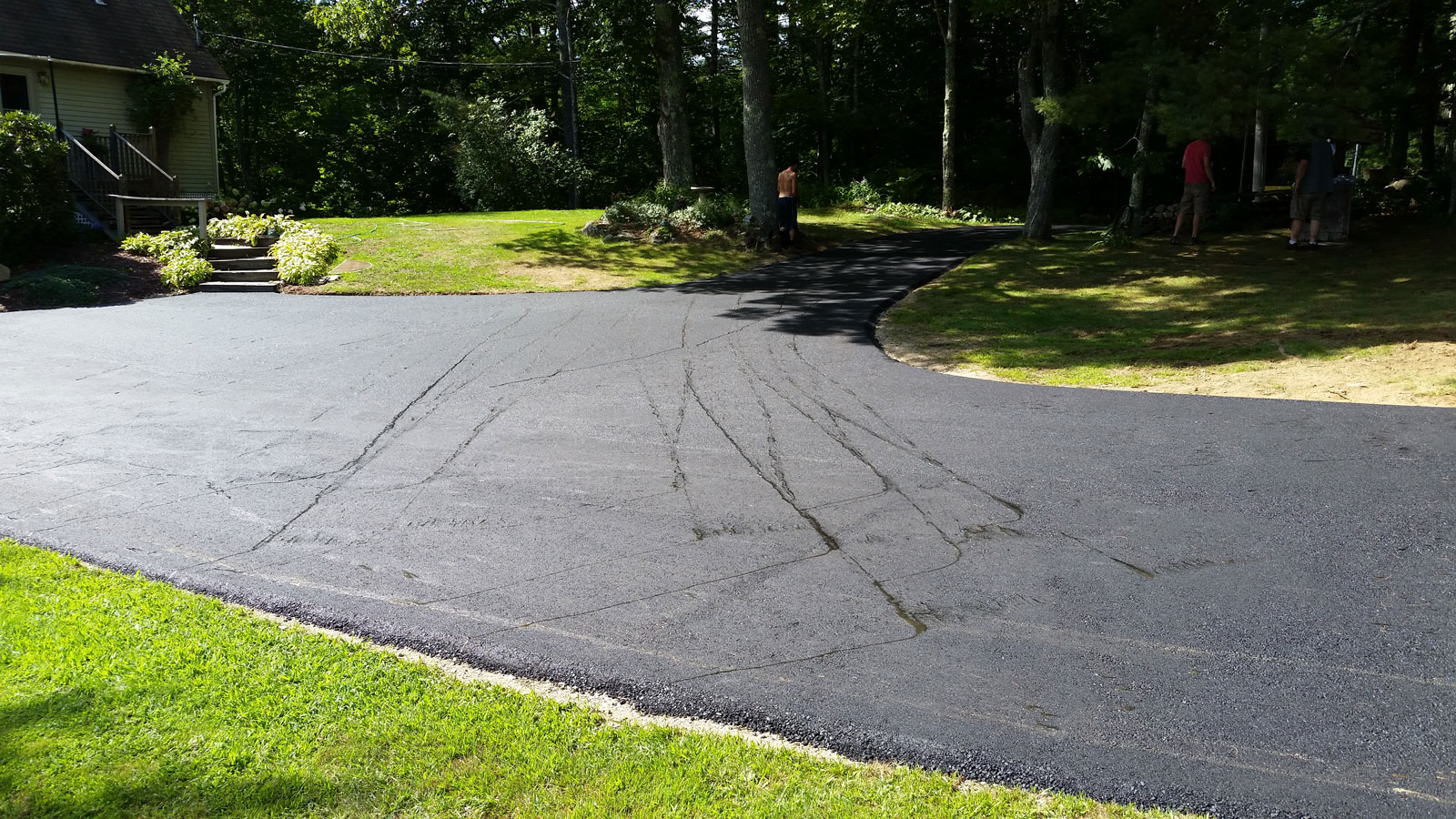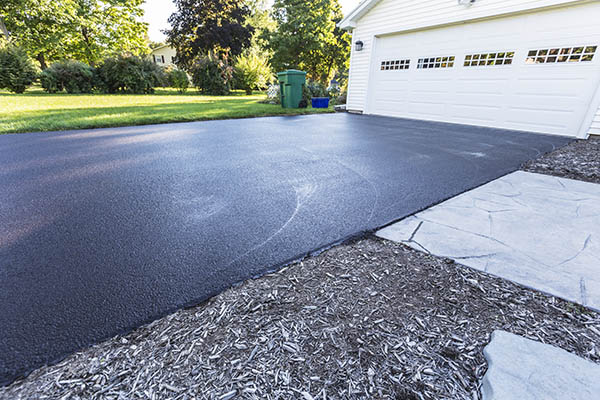Raise Commercial Charm: Hot Mix Asphalt Sealing for Angled Parking Lots
Raise Commercial Charm: Hot Mix Asphalt Sealing for Angled Parking Lots
Blog Article
Hot Mix Asphalt: A Sustainable Remedy for Pavement
Warm Mix Asphalt (HMA) has actually arised as a leading sustainable selection for sidewalk options, providing a myriad of ingenious modern technologies and environmental benefits. As the need for environment-friendly building practices grows, exploring the nuances of HMA's sustainability can offer valuable understandings into the future of sidewalk solutions.
Ecological Benefits of Hot Mix Asphalt

In Addition, Warm Mix Asphalt aids to minimize city warmth island results. Its dark color soaks up sunlight, lowering the amount of warmth showed back right into the ambience compared to lighter-colored pavements. This can reduce ambient temperatures in city locations, decreasing the demand for a/c and eventually decreasing power consumption.
Additionally, Warm Mix Asphalt contributes to enhanced stormwater monitoring. Its permeable nature enables water to infiltrate the sidewalk and recharge groundwater materials, decreasing overflow and the danger of flooding. These environmental benefits make Warm Mix Asphalt a lasting option for paving freeways and roadways.
Power Performance in HMA Production
Is energy performance a vital consider the manufacturing of Hot Mix Asphalt (HMA)? Absolutely. Energy plays a considerable function in the production of HMA, affecting both expense and environmental sustainability. One essential aspect of energy efficiency in HMA manufacturing is the usage of cozy mix asphalt (WMA) modern technologies (commercial parking lot paving). WMA enables the blending and positioning of asphalt at lower temperatures compared to typical warm mix asphalt, leading to reduced power intake throughout production. This process not just reduces fuel usage yet additionally reduces greenhouse gas emissions, making it a more eco-friendly option.
Moreover, developments in plant innovations have caused even more energy-efficient HMA production procedures. Modern plants are developed with functions like recycled asphalt pavement (RAP) handling capabilities, reliable burner systems, and improved insulation, all adding to energy cost savings. By optimizing power use in HMA production, the sector can decrease its carbon impact while preserving top quality sidewalk materials. Energy performance is, for that reason, a crucial factor to consider in guaranteeing the sustainability of Warm Mix Asphalt production.
Recyclability of Warm Mix Asphalt
The recyclability of Hot Mix Asphalt (HMA) is a critical facet of its sustainability and long-term environmental effect. HMA is just one of one of the most recycled materials in the United States, with over 100 million lots of reclaimed asphalt pavement (RAP) being reused each year in brand-new pavement construction. Recycling HMA uses numerous ecological benefits, such as decreasing the requirement for virgin materials, try these out reducing power intake throughout manufacturing, and reducing the amount of waste sent out to garbage dumps.
The procedure of reusing HMA includes crushing the existing sidewalk, squashing it right into smaller sized items, and blending it with brand-new accumulation and asphalt binder to produce a recycled mix. This recycled mix can commonly perform along with and even far better than traditional HMA, while calling for less basic materials and creating reduced greenhouse gas discharges. By including RAP into new pavement projects, roadway firms can preserve natural resources, decrease costs, and minimize the environmental impact of roadway building and construction and upkeep activities. In general, the recyclability of HMA plays a significant role in advertising lasting methods within the pavement industry.

Long-Term Efficiency of HMA
Asphalt sidewalks show durability and resilience over an extended period, reflecting the long-lasting performance of Hot Mix Asphalt (HMA) The longevity of HMA can be associated to its capability to endure rush hour tons, severe weather, and the impacts of aging. Studies have actually shown that well-designed and properly constructed HMA sidewalks can last for two decades or even more with routine maintenance. The key to taking full advantage of the long-lasting performance of HMA hinges on making use of high-grade products, complying with best practices in construction, and applying effective upkeep strategies. Correct water drainage, routine evaluations, and timely fixings are crucial for protecting the structural integrity of HMA sidewalks gradually. Furthermore, advancements in HMA modern technology, such as making use of polymer-modified binders and warm mix asphalt, have actually additionally enhanced the durability and long life of HMA pavements. By focusing on high quality building and construction and upkeep practices, HMA remains to prove itself as a lasting and affordable solution for resilient pavement facilities.

HMA: Resilience and Sustainability
Showing both toughness and sustainability, Hot Mix Asphalt (HMA) has actually ended up being a cornerstone in the building and construction of long-lasting sidewalk infrastructures - commercial parking lot paving. HMA's durability comes from its ability to stand up to heavy tons, harsh weather, and high web traffic quantities, making it a dependable selection for streets, freeways, and more airport runways. The make-up of HMA, which generally consists of accumulations, binder, and filler, plays an important function in enhancing its durability and resistance to deterioration
Furthermore, HMA's sustainability hinges on its recyclability and energy-efficient production procedure. The capability to recycle recovered asphalt pavement (RAP) in brand-new HMA mixtures lowers the need for virgin products and reduces the ecological impact of pavement construction and maintenance. In anonymous addition, the power efficiency of generating HMA depends on its reduced blending temperatures contrasted to other pavement materials, resulting in decreased energy intake and greenhouse gas discharges.
Final Thought
In conclusion, hot mix asphalt (HMA) supplies a sustainable option for pavement with its eco-friendly characteristics. HMA's recyclability, power effectiveness in manufacturing, and long-lasting durability make it an environmentally friendly option for roadway construction. By saving all-natural sources, lowering waste, and decreasing greenhouse gas exhausts, HMA plays a critical role in advertising sustainability in facilities advancement. Its capability to reduce urban heat island results better highlights its value in producing eco aware and resistant sidewalk systems.
HMA is one of the most recycled products in the United States, with over 100 million lots of reclaimed asphalt sidewalk (RAP) being reused each year in brand-new pavement building.The process of reusing HMA involves crushing the existing pavement, squashing it into smaller sized pieces, and blending it with new accumulation and asphalt binder to create a recycled mix.Asphalt sidewalks demonstrate longevity and durability over an extended period, mirroring the long-lasting efficiency of Hot Mix Asphalt (HMA) In addition, developments in HMA modern technology, such as the use of polymer-modified binders and cozy mix asphalt, have additionally boosted the sturdiness and longevity of HMA pavements. The capacity to reuse recovered asphalt sidewalk (RAP) in new HMA blends lowers the demand for virgin materials and decreases the environmental effect of sidewalk construction and maintenance.
Report this page